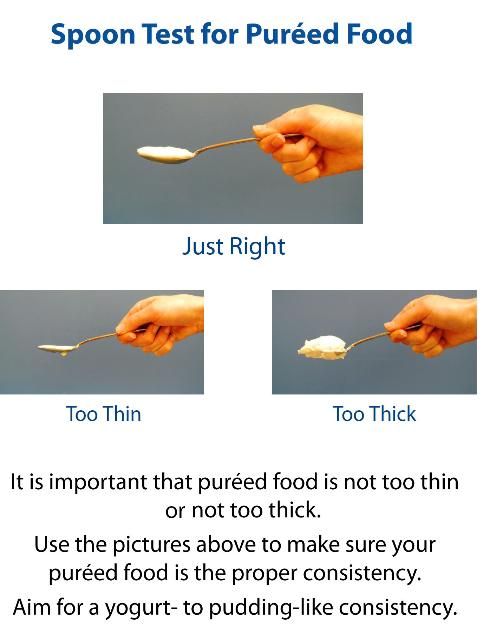Why should you use the spoon test for puréed foods?
Puréed foods prepared for people with swallowing problems (dysphagia) should meet the textural guidelines recommended by health professionals trained in dysphagia management. Proper texture is the priority when preparing purées. A puréed food should have a uniform texture that is "spoon thick" and should not require any chewing. It should not be too dry, sticky, lumpy, or thin/runny. Adjustments in thickness may be made according to an individual's specific needs.
How to use the spoon test
A spoon test can be used for small batches of food to ensure that the food is the recommended texture—"spoon thick."
It is important that puréed food is not too thin and not too thick. A yogurt- or pudding-like consistency is considered "spoon thick" and is the proper texture for purées.
Use the pictures to make sure your puréed food is the proper consistency.

Credit: UF/IFAS
Learn More
Your local UF/IFAS Extension Family and Consumer Sciences (FCS) agent may have more written information and nutrition classes for you to attend. Also, a registered dietitian (RD) can provide reliable information to you.